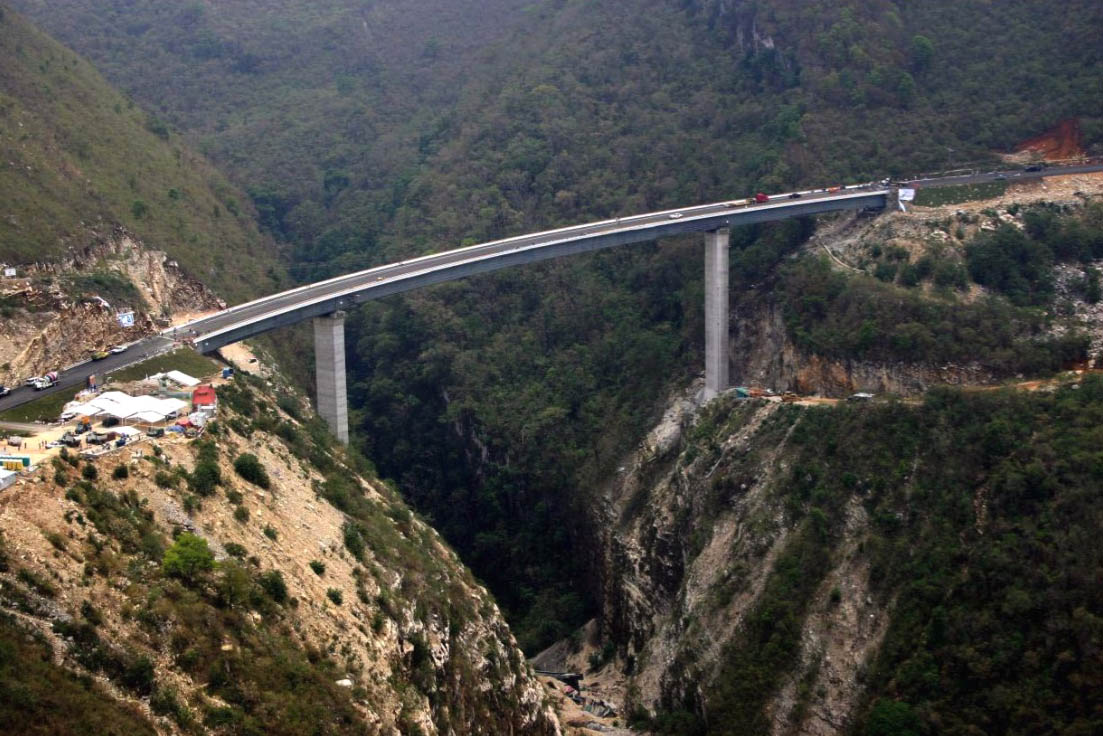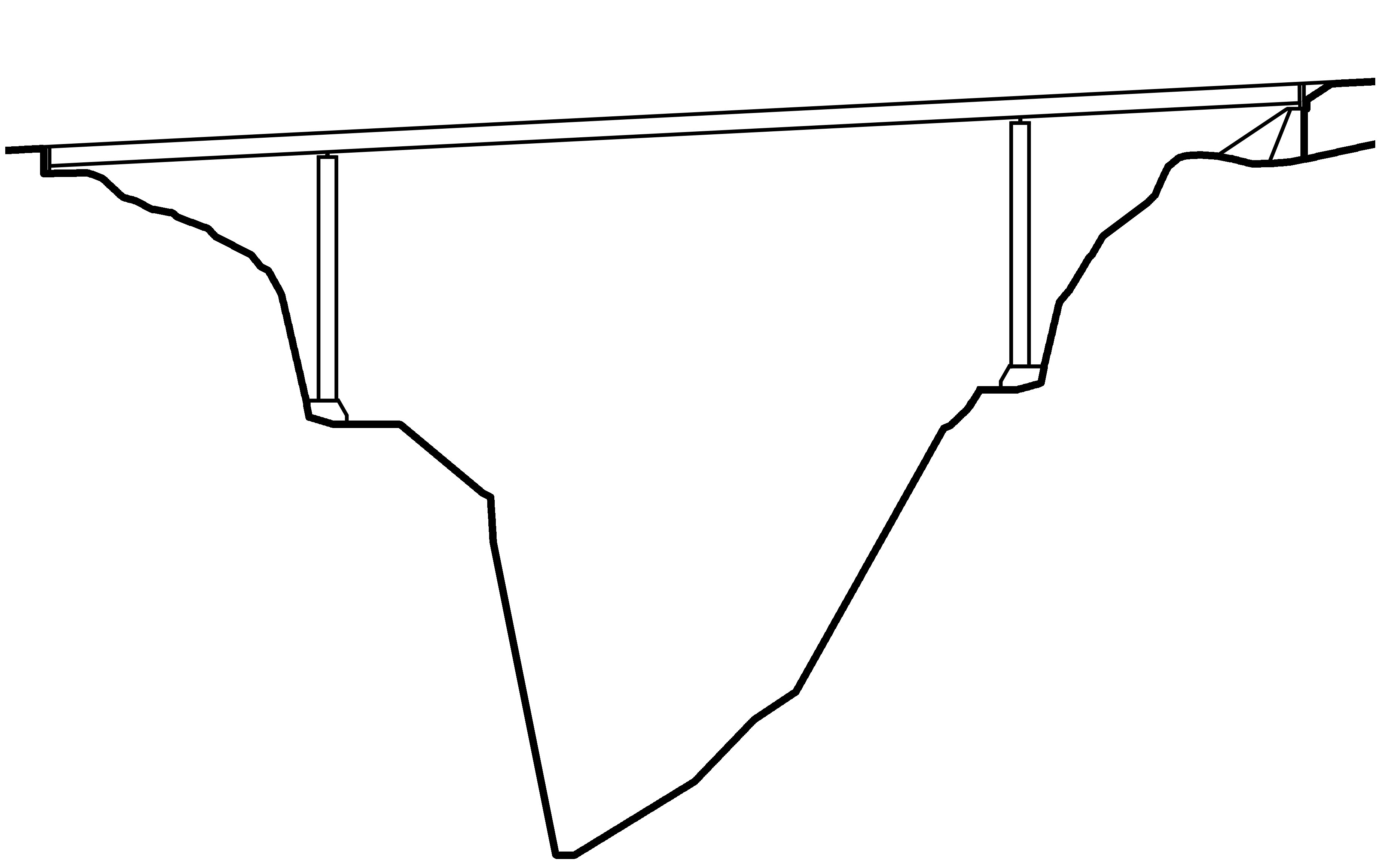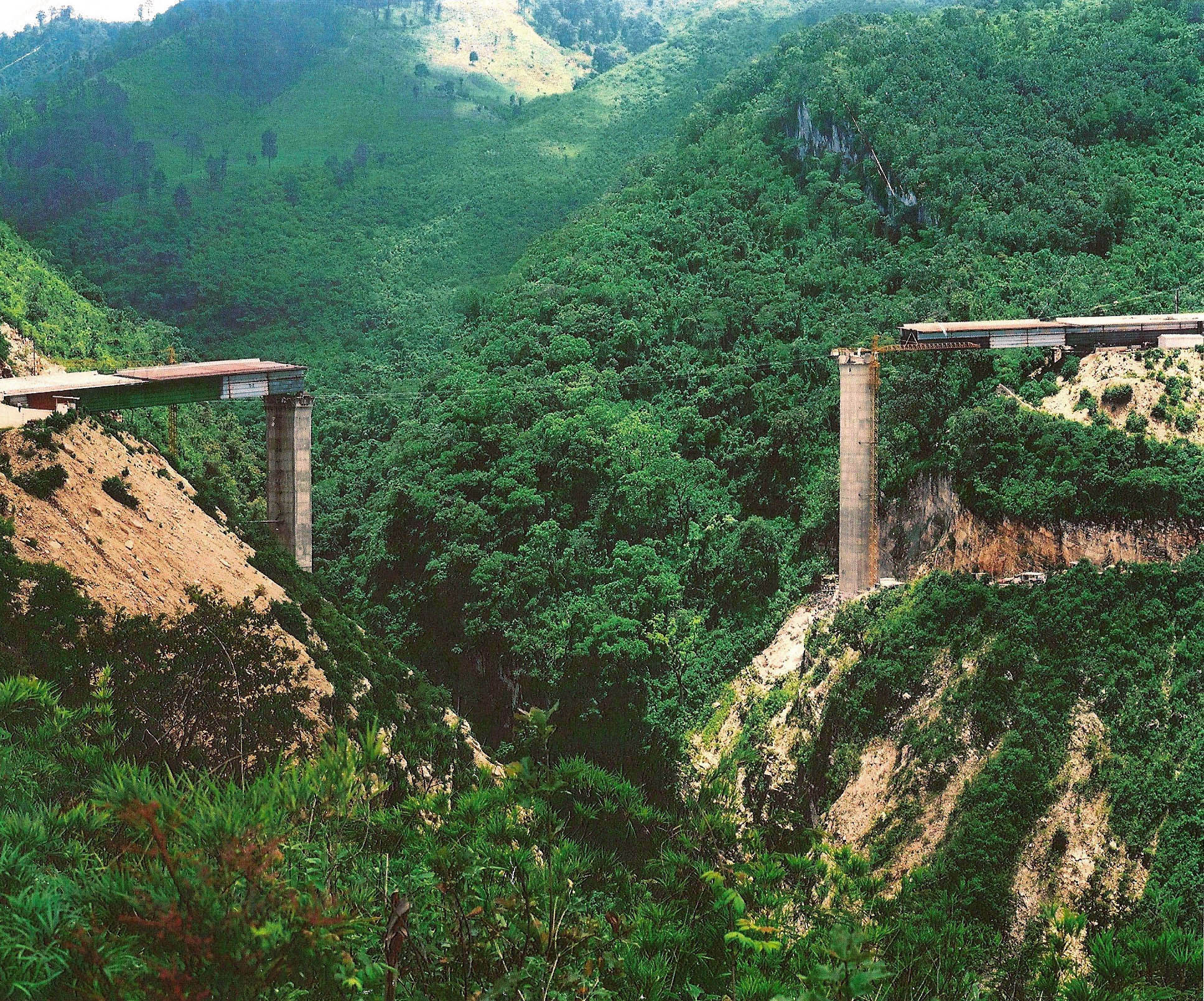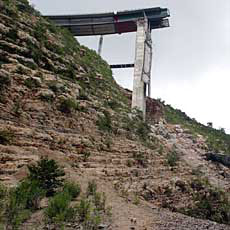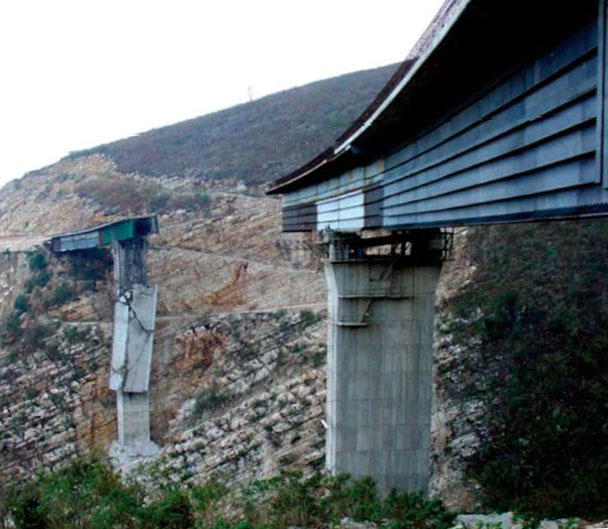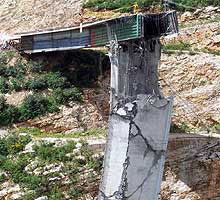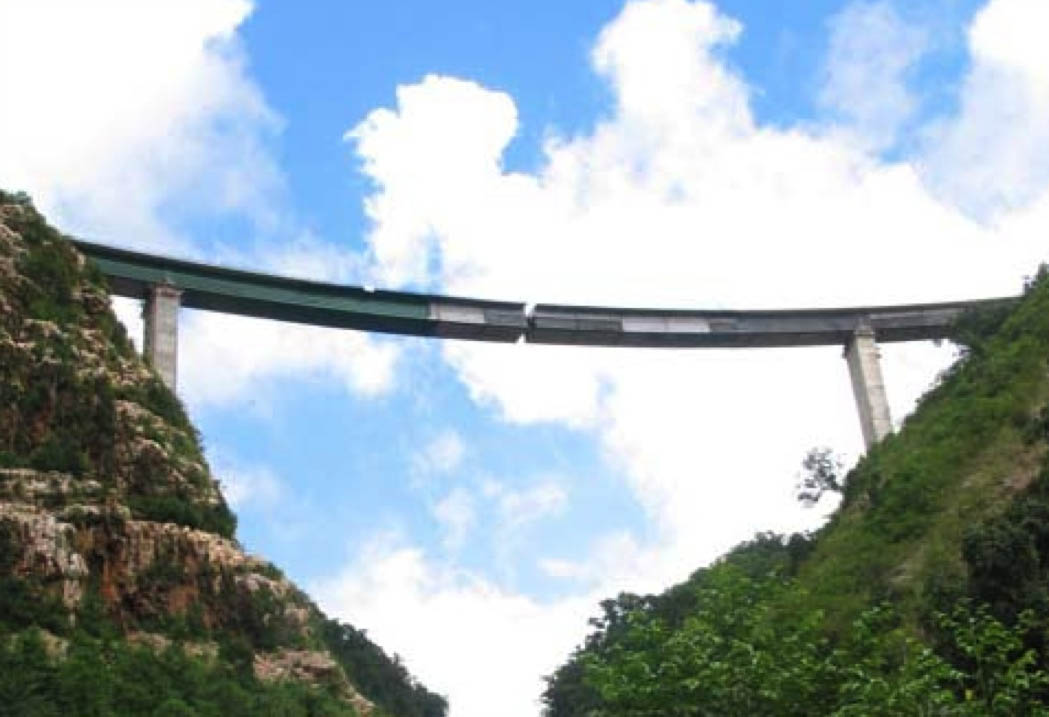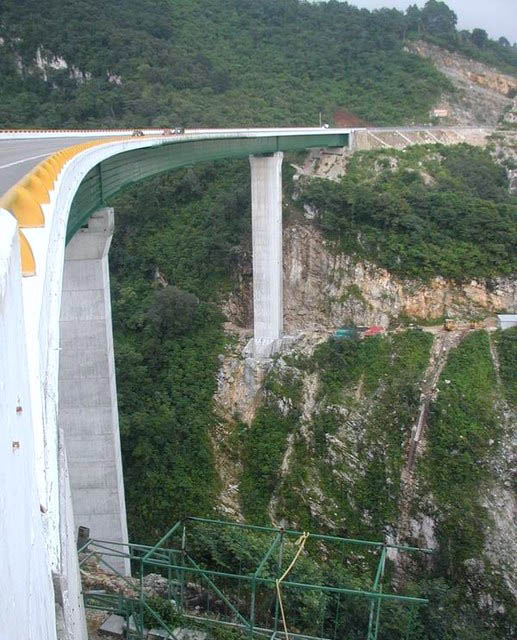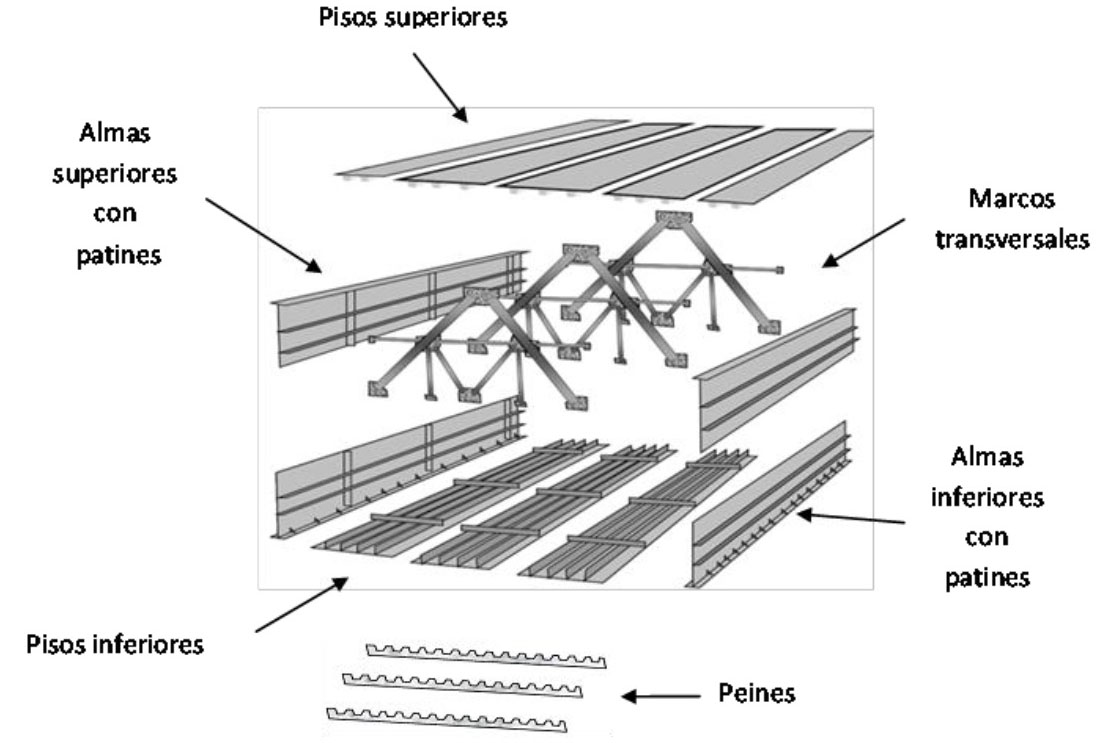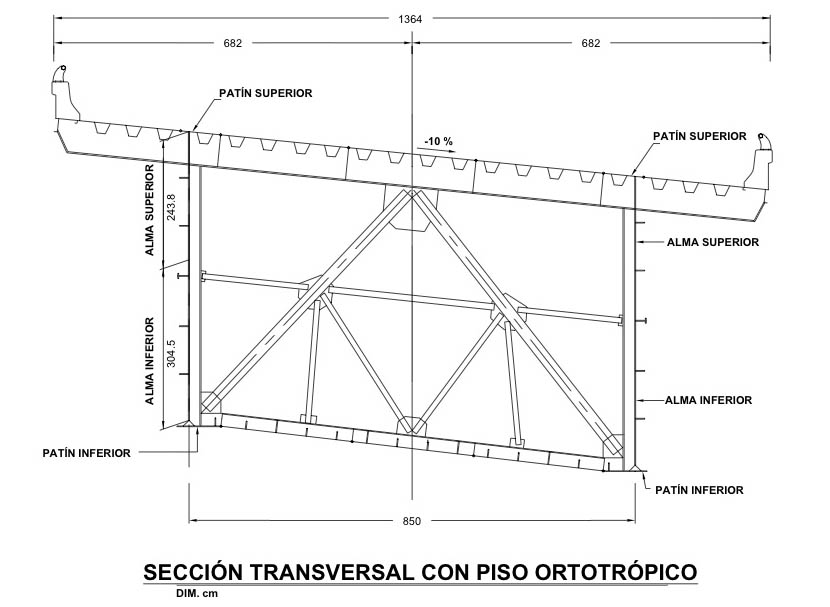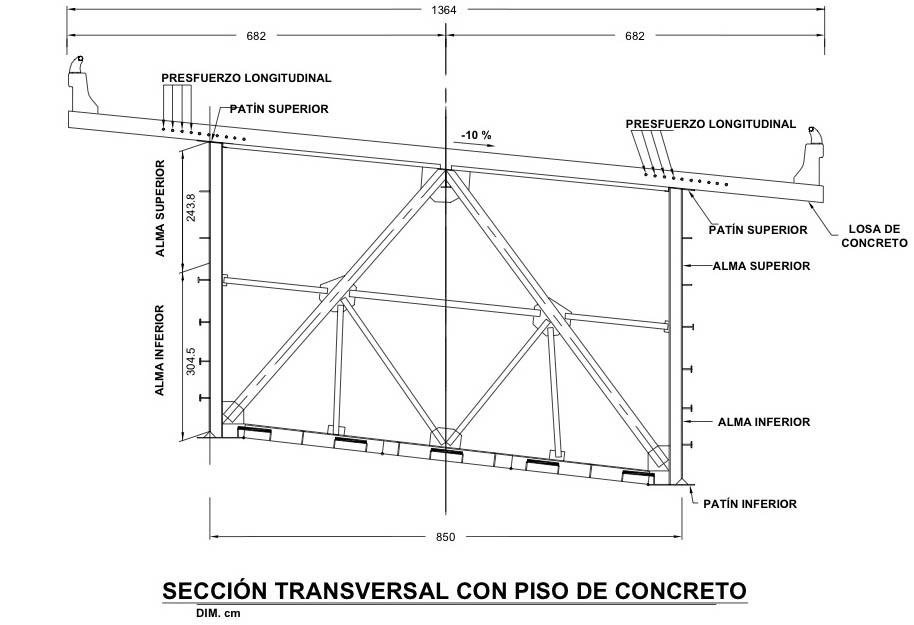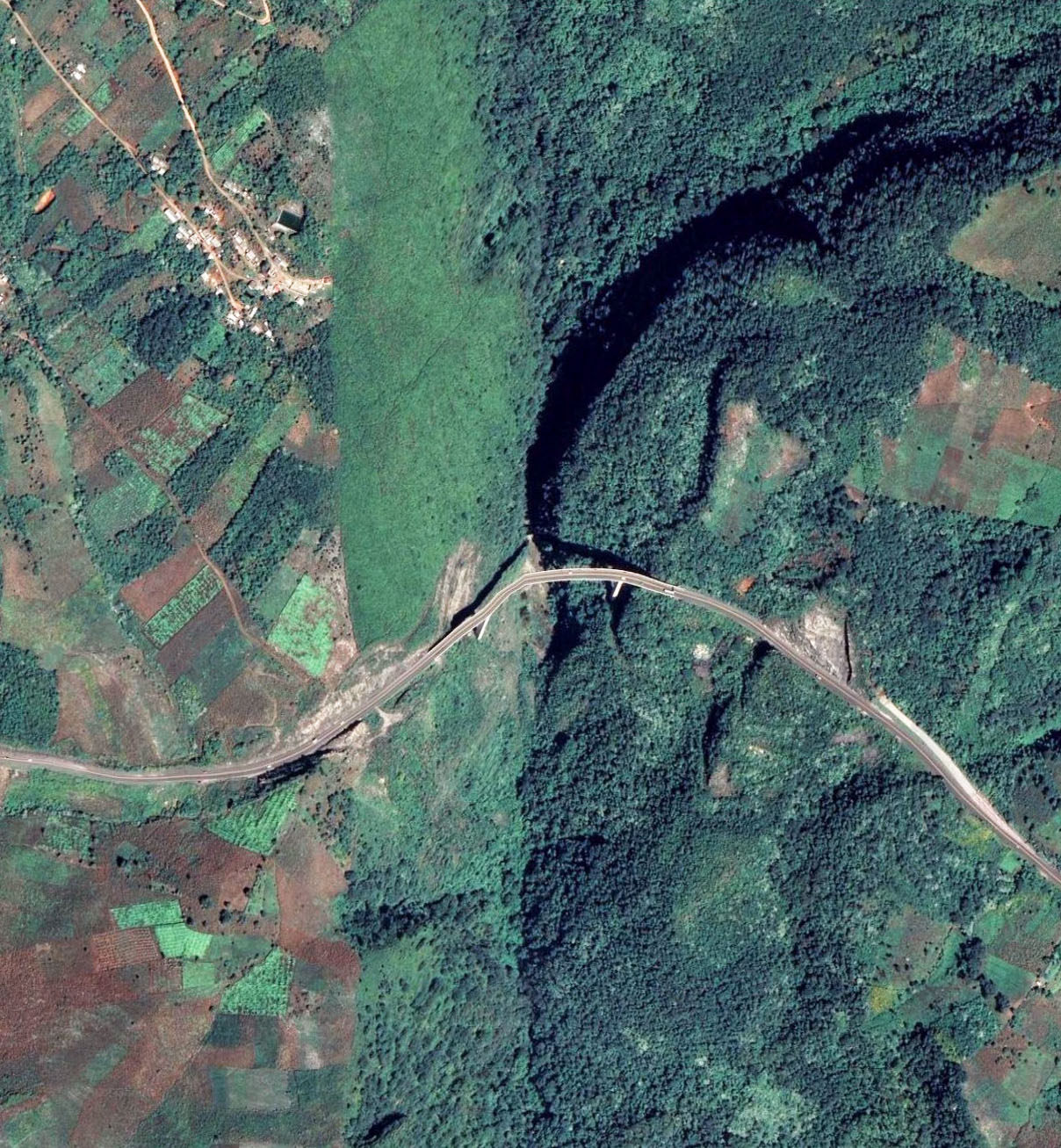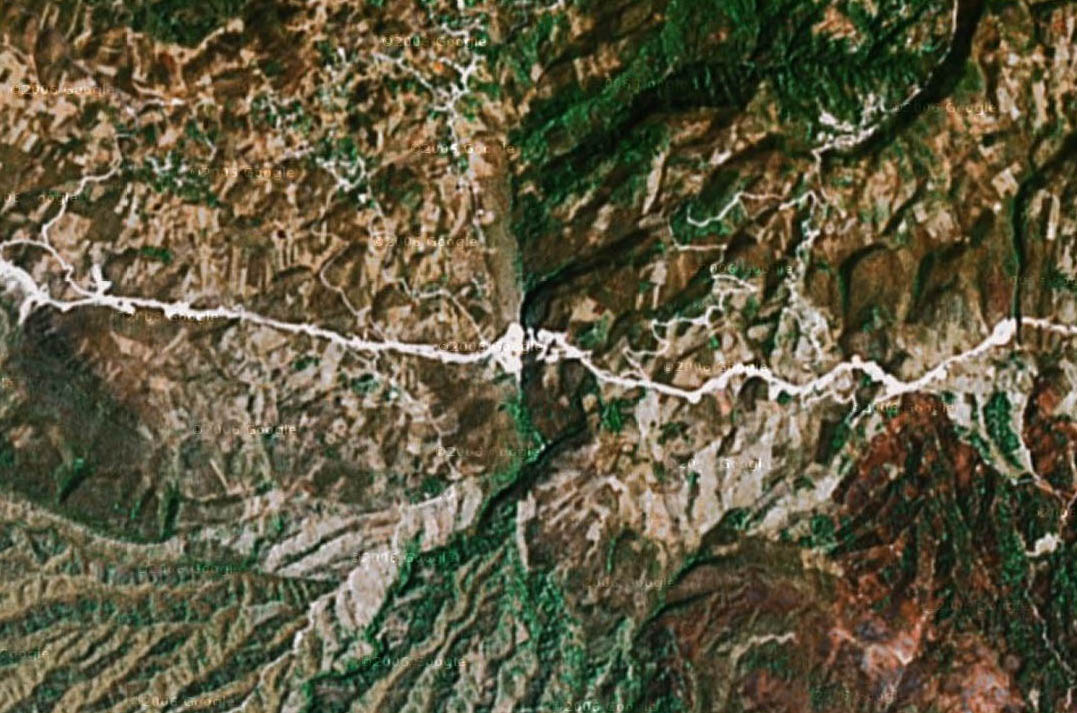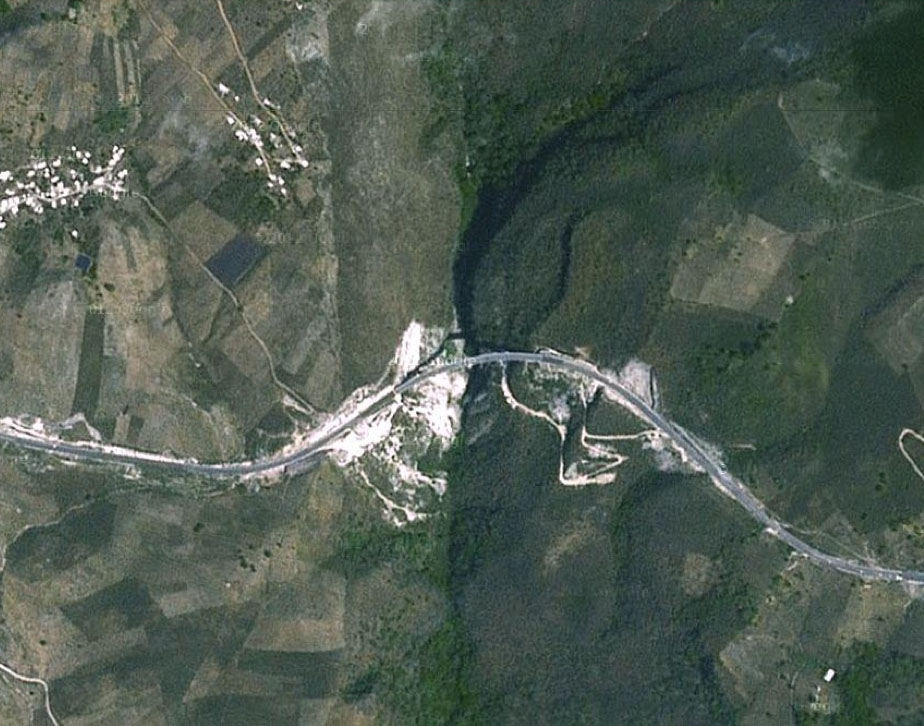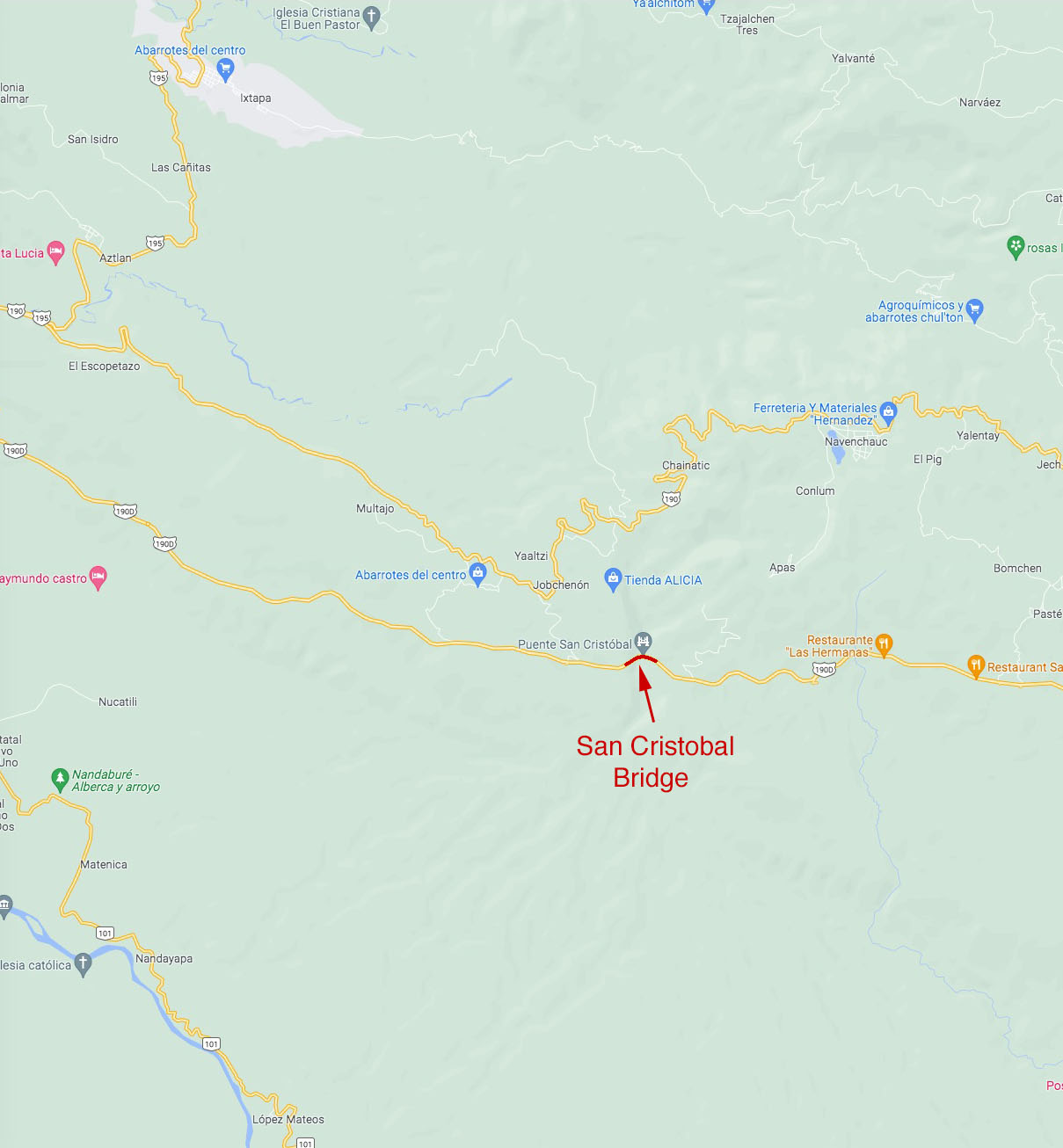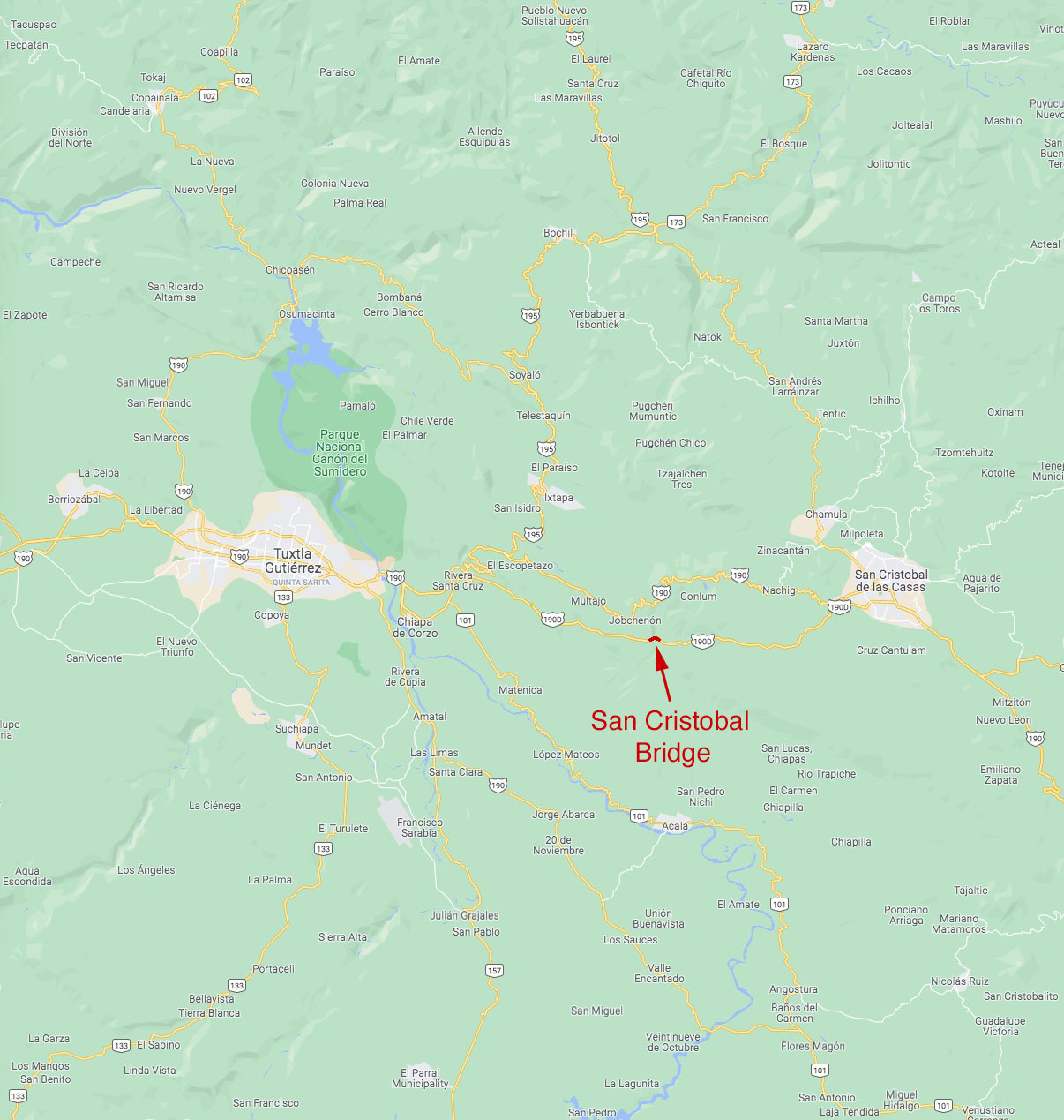San Cristobal Bridge
San Cristóbal Bridge
Puente San Cristóbal
Ajtectic, Chiapas, Mexico
623 feet high / 190 meters high
584 foot span / 178 meter span
2006
Currently the 4th highest bridge in Mexico, the Puente San Cristóbal crosses a deep crevasse on the new San Cristóbal-Tuxtla Gutiérrez highway that finally opened in 2006. Connecting Tuxtla Gutiérrez with San Cristóbal de las Casas in Mexico’s southern state of Chiapas, the modern 2-lane toll expressway bypassed a winding mountain road of tight curves and endless switchbacks. The bridge earned a permanent place in the Mexican engineering history books when half of the main span box beam completely collapsed into the canyon on October 24, 2004 during the final phase of its construction.
The superstructure of the San Cristóbal bridge consists of three spans of 238 feet (72.53 mtrs), 584 feet (177.94 mtrs) and 238 feet (72.53 mtrs). Two concrete piers approximately 200 feet (61 mtrs) high support the roadway. The road has a 10 percent bank as it curves 623 feet (190 mtrs) above the Arroyo Chentic. The central 331 feet (101 mtrs) of the main span is composed of a steel orthotropic deck while the rest of the main span and the side spans decks are made of a prestressed concrete slab. With no ground available to put up temporary falsework, engineers had to build the main span by cantilevering the two 295 foot (90 mtr) halves out from the piers. Beam bridges are always at their most vulnerable just before the two halves are closed in the center when the bending forces are at their greatest. A continuous curve only complicates things further since the span is more likely to twist or bend sideways as construction progresses. According to the official accident report, a horizontal displacement of 20 centimeters combined with an earthquake of 4.0 created vibrations and movement strong enough to bend the incomplete span and that neither the designers or the construction team was at fault.
According to a paper by bridge engineers Marwan Nader, Rafael Manzanarez, Jack Lopez-Jara and Carlos De La Mora, the principal cause of the collapse was later identified as failure of the shear connectors in the concrete slab. This failure induced the loss of composite action and the collapse of the structure due to the lack of redundancy of the cantilever system. The shear failure of the shear studs was caused by their insufficient number and due to poor workmanship of the welds connecting them to the top flanges of the steel box girder.
A site evaluation of the collapsed structure found several additional problems: • Significant delamination of concrete slab on the Tuxtla- Gutierrez side. • Significant cracking of the concrete slabs on both the Tuxtla-Gutierrez and San Cristobal sides. • Signs of local buckling during launching in the lower web panels, especially on Segments 6 and 11. • Significant damage on Pier 2 due to impact of the collapsed superstructure onto the pier. Further evaluation of the design found the following: • Overstress in the bottom flanges of the box girders due to inadequate spacing and sizing of longitudinal stiffeners. • Insufficient post-tensioning in the concrete slab to prevent cracking and tension during launching. • Insufficient concrete slab strength.
The entire structure was rebuilt and after a delay of more than a year, opened in May of 2006. The completed San Cristóbal bridge is designed to handle earthquakes as strong as 8.0. The subtle curve and clean lines of this graceful bridge are accentuated by 6 rows of horizontal flanges that run alongside the green box girder. Puente San Cristóbal was the the highest bridge in Mexico before it was surpassed by Baluarte, El Carrizo and San Marcos bridges.
Former President Vicente Fox attends the San Cristóbal bridge inauguration in 2006.
West side tower damage from the collapsed main span.
San Cristobal Bridge satellite image.
San Cristobal Bridge location map.
